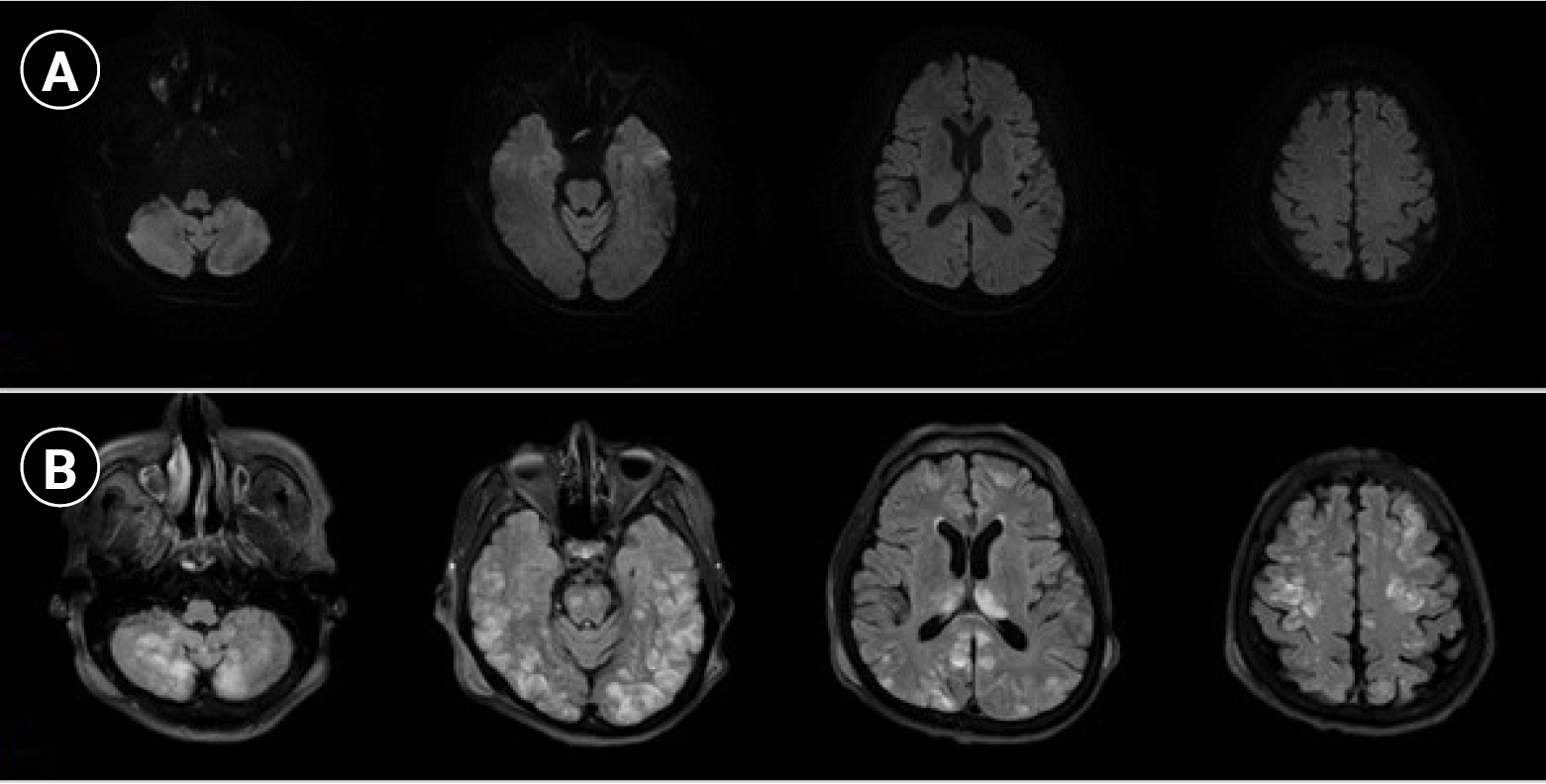A 51-year-old male patient presented with a generalized tonic-clonic type seizure. He had a history of renal cell carcinoma and had received axitinib 2 weeks before this seizure event due to the unresponsiveness to the previous chemotherapeutics. He did not experience any neurologic symptoms previously. His vital rhythm showed elevated blood pressure and tachycardia. He became deeply drowsy soon after the seizure attack, with no definite lateralizing or localizing signs.
Electroencephalogram showed no epileptiform discharges. Magnetic resonance imaging revealed extensive increased signal changes in the bilateral hemispheres and cerebellum, suggestive of posterior reversible encephalopathy syndrome (PRES) (Fig. 1). Axitinib was withdrawn and antiseizure medication was given. His mental status did not recover after that, possibly because of the extensive parenchymal lesions and aggravating medical condition. The patient expired 9 days later due to tumor progression and complications including aspiration pneumonia and acute kidney injury.
Anti-vascular endothelial growth factor (VEGF)-targeted compounds including axitinib are reported to be associated with PRES [1-3]. Administration of anti-VEGF agents is commonly complicated by hypertension, which may lead to neuro-vascular toxicities resulting in PRES [2,3]. This first-reported case of axitinib-induced PRES in Korea indicates that physicians should be aware of the possible neurologic complications of certain chemotherapeutic agents.






